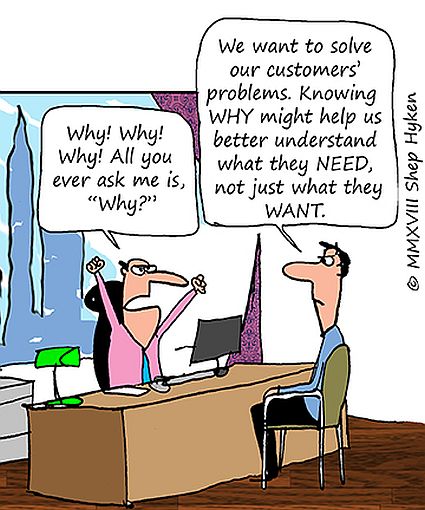Most of the time, as sellers, we focus on our self interests. As a result we spend a lot of time looking at our selling process and the things we want to do to our customers. We focus on the things that drive our success, perhaps not really understanding what the customer is trying to achieve and their success.
Sometimes, though rarely, we think about their buying process. But usually we think about it in the context of things we think they should be doing to make it easier for us to sell to them. We design their activities as a perfect complement to the things we are doing, optimizing their ability to buy from us.
But even if we try to think about the customer buying journey/process, we are still thinking incorrectly. We aren’t really understanding what the customer is trying to do and how we can be most helpful to them. And that is why they and we fail the majority of the time.
Buying is just a component of the change management process a customer explores. They are trying to solve a problem, address an opportunity, do something differently. introduce something new within their own organizations or to their customers. As a result, the things the customer cares about are broader than the purchase of a product or solution.
Stated differently, their “Why,” isn’t “We need a CRM system, new machine tools, buy semiconductors.” Their “Why” is, perhaps, to improve sales productivity, improve or expand manufacturing operations, develop and bring new products to market.
And this is where our conversations with customers go off target, we are focused on what we sell and the customer is focusing on what they need to achieve. It’s critical that we understand what the customer is trying to achieve, connecting the dots between how what we sell will accelerate their ability to achieve their goals.
But we can’t just focus on this, we have to help them navigate through their change project. The majority of internal change projects fail (ref Morten Hanson, Collaboration). They fail for all the same reasons we see buying projects fail. They don’t know how to manage the project, they get lost, they don’t have the internal support they need, they struggle to make sense of what they are doing, they worry about whether they are doing the right thing for themselves and the company. These stand in the way of their ability to achieve their goals; these stand in the way of us achieving our goals.
Sometimes, we are unintentionally misled by our customers. They reach out, saying, “We’re interested in your products/services…..” Music to our ears. It’s just what we want to hear, what we’ve been trained to hear. But if we don’t drill down to understand the bigger change management issues, we will never connect the way we must, we will never be as helpful as we should be.
Our conversations need to dig under their expressed interest in our offerings, “What’s causing you to be interested in these? Why is this important? Why….., Why….., Why…..”
For example, one of my clients sells electronic components. Their customers contact them about those components. But they drill down into the reason they need to buy those components: “We’re designing an new product that does this….., We need to get it on the market as fast as we can…. We need to reduce time to profitability as much as possible…. We need to reduce/eliminate product failures in the field, reducing warranty/repair costs, and maximizing customer satisfaction…..”
The conversations become less focused on the product, electronic components, and more on what the customer is really trying to achieve. Those are the most important things the customer is trying to do and where they struggle. They later, connect how they and their products help the customer achieve those things.
Customers don’t buy just to spend their money. They are trying to achieve other things. If we don’t understand this, we will never engage the customer in the way that’s most impactful to them and their success. And through engaging the customer in the ways most meaningful to them, we also maximize our abilities to achieve our goals.

Great article and love the perspective. Needs ==> Wants ==. WHY We should be more focused, as sellers, to get to the why quicker and with trust and rapport.